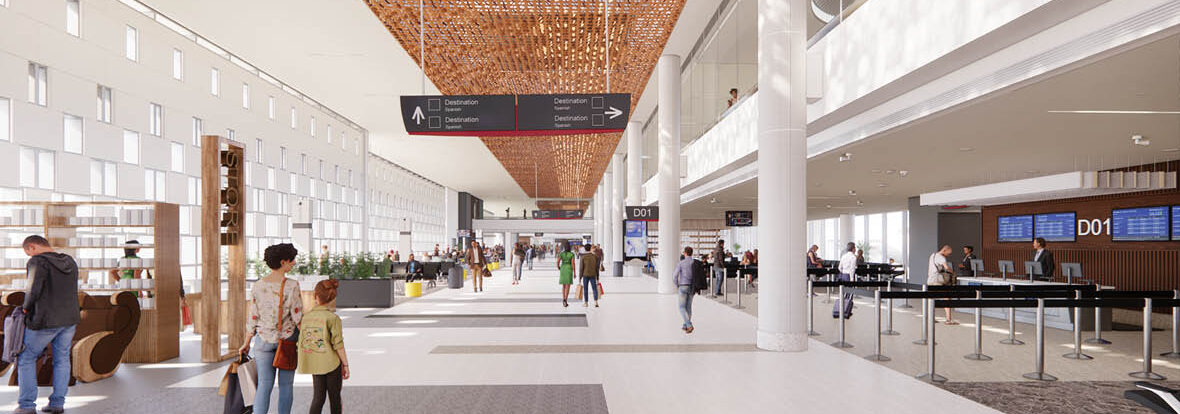So, what is the future of airport facilities development? Aged facilities and gate constraints experienced at many of the nation’s airports in 2019 will once again be a problem for the airports and airlines as the recovery continues. Simultaneously, the airlines’ and airports’ focus on brand and passenger experience have resulted in a bit of a ‘product arms race’ to deliver a top-notch passenger experience, and they are investing in improvements to everything from the departures curb, tailored check-in sequences, security checkpoint technology, lounges, and gatehouses. Meanwhile, as more of the traveling public has grown up in the smartphone era, expectations of a “connected” experience have become the norm in many public spaces.
Future facility design will support a new suite of customer offerings that will generate new revenue streams, push brand identity and allow passengers to make choices to influence their own travel experience. While leveraged tech is already a cornerstone of today’s travel process, the next generation of design will go further and more tightly entwine data and the physical space to terminal amenities using the data we drop along our travel path. Once the customer opts in to share their location, airports and airlines will be able to track their location within the airport and make informed operational decisions to respond to long queues, launch or hold a flight, and push information about concession options along the customer’s path of travel. Data on passenger movements through the terminal, married up with connecting flight information and passenger preferences, can trigger offerings of appointment style concessions such as showers, haircuts or massages.
The revitalization of aging airport infrastructure requires an innovative approach and project-specific solutions that focus on creating the best possible outcomes for long-term success. We understand the challenge of optimizing budget with scope while planning our work to minimize operational impacts during construction. Gilbane is prepared to help you meet the unique challenges that complex airport projects present. We have the expertise in managing all aspects of the project – from design through commissioning – to predictably deliver your project safely, on time and within budget.
Gilbane offers state-of-the-art tools, family values and a passionate and talented staff that focuses on the client’s needs. This approach to construction is what I looked for in my 19 years as an Owner. For more information, check out our Gilbane Aviation ePub.

